Columbus: (614) 866-2477
Gahanna: (614) 939-9330
Lancaster: (740) 653-2656
Newark: (740) 344-8286
North Gahanna: (614) 478-2111
East Columbus: (614) 235-2323
Westerville: (614) 939-9330
Dublin: (614) 339-2000
Pickerington: (614) 545-4321
Lancaster: (740) 653-2656
Items filtered by date: June 2023
Relief From Bunions
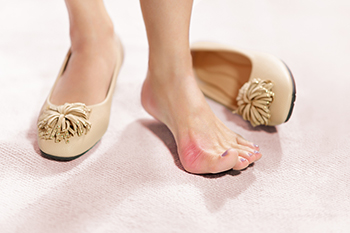
A bunion can be painful, and many people avoid seeking medical treatment until it becomes unmanageable. A bunion is a bony protrusion that develops on the side of the big toe, and it can cause the other toes to shift together. It can form due to genetic reasons or from wearing shoes that do not have ample room for the toes to move freely in. High heels can fit into this category, and choosing a shoe with a wider toe box is beneficial, which may help prevent bunions from forming. A bunion is considered to be a deformity and will progress until they are dealt with. Patients may find mild relief when larger shoes are worn that can accommodate the bunion and a protective pad is worn over it. This may help to prevent corns from developing on top of the bunion as it constantly touches the side of the shoe. When walking or completing daily activities becomes difficult, many people will seek medical attention for relief. If you have a bunion, it is suggested that you consult with a podiatrist who can perform surgery that can provide permanent relief.
If you are suffering from bunions, contact one of our podiatrists of Foot & Ankle Specialists of Central Ohio. Our doctors can provide the care you need to keep you pain-free and on your feet.
What Is a Bunion?
A bunion is formed of swollen tissue or an enlargement of boney growth, usually located at the base joint of the toe that connects to the foot. The swelling occurs due to the bones in the big toe shifting inward, which impacts the other toes of the foot. This causes the area around the base of the big toe to become inflamed and painful.
Why Do Bunions Form?
Genetics – Susceptibility to bunions are often hereditary
Stress on the feet – Poorly fitted and uncomfortable footwear that places stress on feet, such as heels, can worsen existing bunions
How Are Bunions Diagnosed?
Doctors often perform two tests – blood tests and x-rays – when trying to diagnose bunions, especially in the early stages of development. Blood tests help determine if the foot pain is being caused by something else, such as arthritis, while x-rays provide a clear picture of your bone structure to your doctor.
How Are Bunions Treated?
- Refrain from wearing heels or similar shoes that cause discomfort
- Select wider shoes that can provide more comfort and reduce pain
- Anti-inflammatory and pain management drugs
- Orthotics or foot inserts
- Surgery
If you have any questions, please feel free to contact our offices located in Gahanna, Newark, Columbus, and Lancaster, OH . We offer the newest diagnostic and treatment technologies for all your foot care needs.
Foot Shuffling
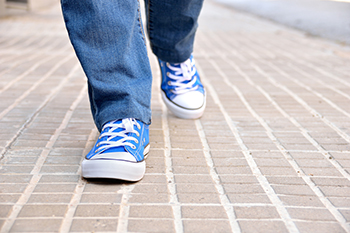
Foot shuffling is when someone takes shorter strides and drags their feet when walking. Consistent shuffling can be a sign of an underlying health issue related to the nervous system, joints, or muscles. The most common neurological condition causing a shuffling gait is Parkinson’s disease. Foot shuffling can also come on from foot drop. This is when there is a difficulty or inability to lift the foot while taking a step. This condition can be caused by multiple sclerosis, peripheral neuropathy, or stroke, among other things. As one ages, the gait can change with decreased walking speed and range of motion in the ankles, knees, and hips, as well as impaired foot clearance. When the joints of the legs are tight or there is muscle weakness from injuries, health conditions like arthritis, or long periods of inactivity, a shuffling gait can also happen. Stretching and strengthening exercises, balancing activities, and orthotics can help, as well as assistive devices like a walker or cane. If you have a shuffling gait, it is strongly suggested that you see a podiatrist to help identify the underlying cause and devise an appropriate treatment plan individualized to your needs.
If you have any concerns about your feet, contact one of our podiatrists from Foot & Ankle Specialists of Central Ohio. Our doctors can provide the care you need to keep you pain-free and on your feet.
Biomechanics in Podiatry
Podiatric biomechanics is a particular sector of specialty podiatry with licensed practitioners who are trained to diagnose and treat conditions affecting the foot, ankle and lower leg. Biomechanics deals with the forces that act against the body, causing an interference with the biological structures. It focuses on the movement of the ankle, the foot and the forces that interact with them.
A History of Biomechanics
- Biomechanics dates back to the BC era in Egypt where evidence of professional foot care has been recorded.
- In 1974, biomechanics gained a higher profile from the studies of Merton Root, who claimed that by changing or controlling the forces between the ankle and the foot, corrections or conditions could be implemented to gain strength and coordination in the area.
Modern technological improvements are based on past theories and therapeutic processes that provide a better understanding of podiatric concepts for biomechanics. Computers can provide accurate information about the forces and patterns of the feet and lower legs.
Understanding biomechanics of the feet can help improve and eliminate pain, stopping further stress to the foot.
If you have any questions please feel free to contact our offices located in Gahanna, Newark, Columbus, and Lancaster, OH . We offer the newest diagnostic and treatment technologies for all your foot and ankle needs.
Does My Kid Need Orthotics?
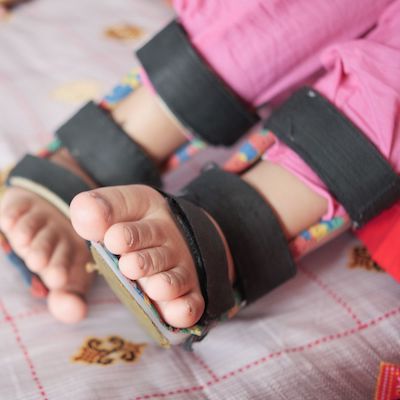 All children start off a bit wobbly as they’re learning to maneuver in the world. Their feet are soft and supple, their bones are still forming, and their neurons are creating new pathways as they learn. Because of this, flat feet, knocked knees, and other gait issues are often seen in the early years. Luckily, they usually resolve themselves by age six or seven.
All children start off a bit wobbly as they’re learning to maneuver in the world. Their feet are soft and supple, their bones are still forming, and their neurons are creating new pathways as they learn. Because of this, flat feet, knocked knees, and other gait issues are often seen in the early years. Luckily, they usually resolve themselves by age six or seven.
Sometimes though, these issues never seem to quite right themselves. If you’re seeing any of these common foot issues in your kids, it might be time to chat with your pediatric podiatrist:
Difficulty with movement
Clumsiness is normal in kids. As we mentioned, they’re still figuring it all out. However, if your child is constantly falling over or tripping, it could indicate an underlying issue that needs to be addressed. Stiffness in a foot or ankle, regular limping, or dragging feet might indicate something else is going on that should be assessed by a podiatrist as well.
Early issues continue
If your child is over the age of four and still walks with bowed legs, knock knees, or another gait that seems “off,” it might need to be assessed. If left alone, some issues could force their feet to roll in as they start to walk, which can not only lead to poor posture, but also pain.
Family foot issues
Some foot issues are actual hereditary. If anyone in your family has flat feet, arthritis, or ingrown toenails often, it’s a good idea to get your child’s feet checked out.
Check the arches
Arch issues can lead to flat feet. You should be able to slip a finger under the arches when your child is standing normally. If this is not possible, then the arches may not properly forming. Abnormal arches can also cause feet to roll inwards, leading to walking on the inner edges of the feet. If uncorrected, this can lead to problems with posture and gait and lead to further foot issues.
Lower limb pain
Any of the above issues can result in constant pain in the legs, knees, ankles, feet, and even the lower back. If your child complains of pain, or if you notice them being reluctant to play, it could indicate underlying problems that should be addressed.
Can orthotics help?
Orthotics are custom-made insoles that fit inside the shoe. They provide tailored support and cushioning while alleviating pain and pressure. They can help support your child’s feet properly to help correct any of the above issues or abnormal gait or posture alignment.
If you’re noticing any foot issues in your child, give us a call!
Any podiatric issues are best resolved when they are diagnosed and treated early. Contact Foot and Ankle Specialists of Central Ohio at any of our 9 locations by calling (614) 339-2000 or requesting an appointment online today!
Diabetes and Your Feet
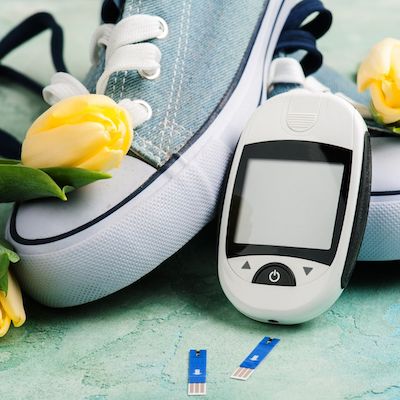 The Center for Disease Control estimates that over 100 million Americans currently have diabetes or prediabetes. Type 2, the most common type of diabetes, occurs when your pancreas can’t produce enough insulin or when your body becomes resistant to insulin.
The Center for Disease Control estimates that over 100 million Americans currently have diabetes or prediabetes. Type 2, the most common type of diabetes, occurs when your pancreas can’t produce enough insulin or when your body becomes resistant to insulin.
Your body needs insulin to function properly, as it allows cells to absorb glucose, which gives your body energy. Without insulin, glucose can’t be absorbed, which causes high glucose levels in the body that will eventually lead to diabetes if left unchecked.
Signs of Diabetes
Diabetes affects everyone differently, so not everyone shows the same signs of developing it. The following are some of the most common symptoms that patients experience:
- Fatigue
- Dry skin
- Weight loss
- Blurred vision
- Constant thirst
- Frequent urination
- Slow-healing sores
- Numbness in the hands or feet
How does diabetes affect my feet?
One common issue with diabetes is nerve damage, a condition called diabetic neuropathy. This condition can cause you to lose feeling in your extremities, which can be particularly harmful if you get a cut or scrape on your foot. The problem is that you might not even feel it to know to clean it or dress it. It could quickly progress to an infection, which can lead to much more serious consequences like amputation.
Daily diabetic foot checks
One simple way to prevent foot issues is to check your feet on a daily basis. Even a quick glance is better than nothing. Here are some things to pay close attention to:
- Sores
- Cuts or scrapes
- Swelling
- Discoloration
- Red spots
- Blisters
- Calluses
- Ingrown Toenails
One other thing to note is any warm spots. This could indicate a blister or ulcer that is just forming. Catching issues early make them easier to treat.
Caring For Diabetic Feet
In addition to daily foot checks, there are regular activities you can perform to keep your feet healthy. These are not time intensive and go a long way in keeping your feet in great shape:
- Wash daily - Take time to wash between your toes with warm water. This is a great time to do your daily foot checks. After you wash them, it is equally important to dry them thoroughly. If moisture gets trapped in between your toes, it could lead to a fungal infection.
- Trim your toenails correctly - Always trim your nails straight across with the nail about even with your toe. This helps to avoid ingrown toenails, which could easily lead to a serious infection.
- Keep your feet protected - Ensure you’re wearing shoes and socks as often as possible. Walking around barefoot puts you at greater risk to step on something or cut your foot. The shoes you choose should give your feet room to breathe so that moisture does not get trapped inside. If your feet are exposed outside - like at the beach or poolside - keep them protected with footwear and sunscreen!
- Keep the blood flowing - Keeping blood circulating to your feet is important to avoid complications that sometimes come with diabetes. Keep your feet elevated when you’re sitting. Stay physically active as much as your doctor says you can or should. Move your ankles or toes throughout the day when you’re seated or stationary to encourage blood flow.
Partner with a podiatrist
While there are many things a diabetic patient needs to keep track about their health, foot health should definitely be one of them! Foot problems are extremely common with diabetes, so it’s not a matter of IF you develop an issue but WHEN. Be prepared by being proactive about regular visits with an experienced podiatrist, and address issues early before they worsen. If you need a podiatrist you can trust for managing your diabetic foot problems, get in touch with our foot doctors at Foot and Ankle Specialists of Central Ohio! To schedule an appointment, request one online or call us at (614) 339-2000 today!
Don’t Let Plantar Warts Spoil Summer Fun
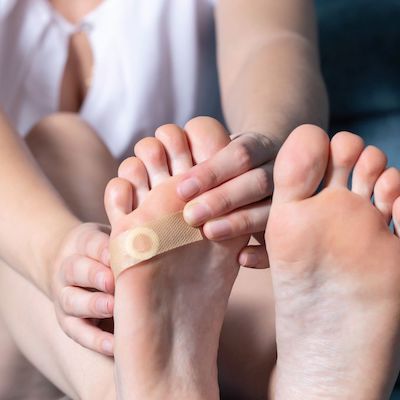 Whether it’s enjoying some warmer weather and getting back to outdoor activities, or heading out on that vacation that you’ve been planning since last year, Summer time activities are the ones that many people look forward to. The last thing we want to think about during these times is warts! But as podiatrists, it’s our job to help keep your feet healthy and happy. That’s why we put together this convenient guide to avoid plantar warts no matter where you find yourself this summer!
Whether it’s enjoying some warmer weather and getting back to outdoor activities, or heading out on that vacation that you’ve been planning since last year, Summer time activities are the ones that many people look forward to. The last thing we want to think about during these times is warts! But as podiatrists, it’s our job to help keep your feet healthy and happy. That’s why we put together this convenient guide to avoid plantar warts no matter where you find yourself this summer!
What’s a Plantar Wart?
Plantar warts are viral infections caused by HPV - human papillomavirus. Typically, plantar warts are non-cancerous growths and are considered not harmful. The infection occurs with direct contact, usually through an open cut or wound or through contact with someone else who has a wart. A common method of transfer is through barefoot use of public showers or pools.
They appear first as small black dots, typically on your heel or the ball of your foot, looking almost like a couple sesame seeds on your foot. With time, they can grow to the size of a pencil eraser. Sometimes they grow in clusters. The warts are typically flat and smooth with a yellowish or brown color. If you notice a new growth on your foot, it’s always best to have it looked at by a podiatrist. Often more serious lesions or other things are self-diagnosed incorrectly as warts.
Can you Treat Plantar Warts?
There are several ways that plantar warts are treated. Unfortunately, it’s not always a quick process. Sometimes it can take up to months for treatment to be completed because the warts lie deep under your skin layers. Your body is up to the task of fighting other viruses that it catches. However, the wart shields itself in your skin so your body does not detect it.
- Over-the-counter liquids, ointments, and sprays are what most people reach for first. However, prolonged use of overly aggressive over-the-counter treatments can cause serious issues like skin irritations, pain, scarring, or infection.
- Acid treatment is common and typically only requires a few applications. If the wart is more stubborn, your doctor might suggest anesthetizing and surgically removing the wart.
To determine the best course of treatment, always consult wiht a podiatrist if you notice plantar warts. Our skilled team of foot doctors at Foot and Ankle Specialists of Central Ohio are experts in dealing with skin and toenail issues and can provide you with the most effective and quick treatments so you can get back to enjoying your summer activities! In the meantime, it’s important to protect your feet from infections by wearing shoes in public areas and not sharing towels, shoes, and clothing.
Need an appointment? Request one online or call us at (614) 339-2000 to schedule an appointment at any of our 9 office locations in the Central Ohio area!
A Few Fun Foot Facts
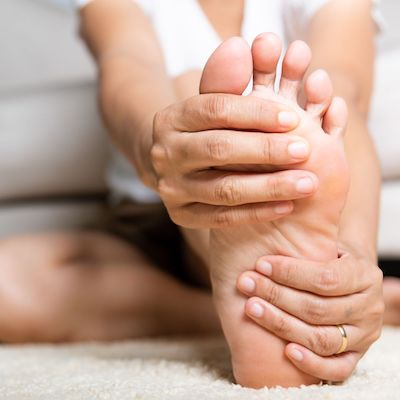 We all know how important our feet are to our day-to-day lives. They carry us around every day, moving our bodies from place to place. Even with all their importance, however, they are sometimes forgotten! That’s why we thought you might want to learn some fun foot facts that might even surprise you!
We all know how important our feet are to our day-to-day lives. They carry us around every day, moving our bodies from place to place. Even with all their importance, however, they are sometimes forgotten! That’s why we thought you might want to learn some fun foot facts that might even surprise you!
Feet are unique!
At a glance, our two feet might seem identical to each other, but they each have their own unique features. Toes on one foot are often longer than on the other, your feets’ width may vary, arches can be higher or lower, and heels narrower. About 60% of people have feet that differ in shape or size. Some people even need a different size shoe for each foot!
Powerful toes!
We use our toes for balance, weight bearing, and nearly every movement. If you didn’t have toes, your feet would hardly work. As you press down during a step, skip, jump, dance maneuver, or basically any other movement, your big toe alerts your brain that you’re balanced. If your big toe is impaired, it can throw your stability off in a big way and maybe even make it impossible to walk.
Feet keep on growing!
Your feet grow with extraordinary speed throughout your childhood. From birth to age 2, our feet double about every two months. They slow down a bit, but never stop growing until around 20 years old. They might stop growing, but they continue to develop and shift. In your 40s, your feet will likely flatten and elongate. Life changes, such as pregnancy or menopause, can also change the size and shape of your feet due to hormonal shifts.
Brain connection!
Each foot has nearly 200,000 nerve endings. Each nerve ending functions as a sensory receptor, transmitting info to your brain about movement, temperature, pressure, pain, or any other necessary foot intel. These signals allow you to move and balance without thinking consciously about it. Your entire nervous system assists with this function, but your feet are the most important organs in the system.
Lots of bones!
A quarter of your bones in your body is in your feet! Despite their size relative to your body, they play a big role in acting as your body’s foundation. This important role that feet play is why when you develop a foot problem, it can ripple through your body and cause pain elsewhere.
Got ticklish feet? That’s a good sign!
All the nerve endings in your feet make them the most ticklish part of your body. Tickling can be annoying, irritating, prickly, exciting, or even pleasurable - it also means that everything is working properly!
Did you learn something new about feet?
Taking a little time each day to think about your feet can make a big difference in your foot health! If you have concerns or questions, don’t hesitate to reach out to Foot and Ankle Specialists of Central Ohio! Our board-certified foot doctors can provide individualized, premier podiatric care to treat your heel pain, chronic foot issues, sports injuries, and toenail problems!
Get in touch by calling (614) 339-2000 to schedule an appointment at any of our locations in the Central Ohio area today!
Athlete’s Foot and Shower Floors

If you are a new college student or are the parent of one, it can be important for you to learn about the dangers of contracting athlete’s foot from shower floors. Many colleges and universities across the country provide students with communal showers. However, if a student uses one of these showers without wearing shower shoes, they may be making themselves more susceptible to developing athlete’s foot. Since the fungus that causes athlete’s foot thrives in environments that are warm and moist, communal shower floors are an ideal place for this fungus to live and spread. A student may consider wearing a kind of flip flops or water shoes while using communal showers to mitigate their risk of contracting athlete’s foot. To learn more about preventing athlete's foot, it is suggested that you schedule an appointment with a podiatrist today.
Athlete’s foot is an inconvenient condition that can be easily reduced with the proper treatment. If you have any concerns about your feet and ankles, contact one of our podiatrists from Foot & Ankle Specialists of Central Ohio. Our doctors will treat your foot and ankle needs.
Athlete’s Foot: The Sole Story
Athlete's foot, also known as tinea pedis, can be an extremely contagious foot infection. It is commonly contracted in public changing areas and bathrooms, dormitory style living quarters, around locker rooms and public swimming pools, or anywhere your feet often come into contact with other people.
Solutions to Combat Athlete’s Foot
- Hydrate your feet by using lotion
- Exfoliate
- Buff off nails
- Use of anti-fungal products
- Examine your feet and visit your doctor if any suspicious blisters or cuts develop
Athlete’s foot can cause many irritating symptoms such as dry and flaking skin, itching, and redness. Some more severe symptoms can include bleeding and cracked skin, intense itching and burning, and even pain when walking. In the worst cases, Athlete’s foot can cause blistering as well. Speak to your podiatrist for a better understanding of the different causes of Athlete’s foot, as well as help in determining which treatment options are best for you.
If you have any questions please feel free to contact our offices located in Gahanna, Newark, Columbus, and Lancaster, OH . We offer the newest diagnostic and treatment technologies for all your foot and ankle needs.
Avoid These Mistakes When Buying Running Shoes
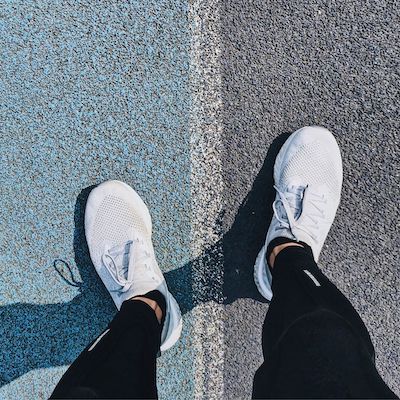
Were you aware that June 3rd marked Global Running Day? Running is an incredibly popular activity and it's never too late to start. All that's required is some motivation and a good pair of running shoes! Your choice of shoes can significantly affect your foot health and the risk of injury. Be cautious of these common mistakes when purchasing running shoes:
- Choosing the same size for every shoe - Even if you know your size in one brand, it's not a guarantee that the same size will fit for a different brand. Take note of this when shopping! Always try on both shoes at the store to ensure they are the right size before making a purchase.
- Not knowing your foot type - Despite the similarity in the appearance of running shoes, they are often designed to suit different foot types. Knowing whether your feet roll inwards or outwards, for instance, can help you choose the perfect pair of shoes.
- Picking the wrong type of shoe for your activity - Did you know that there are many different types of shoes available? It’s important to select a shoe specifically designed for running, especially if you plan to train for a marathon as there are differences in cushioning, support, traction and flexibility.
- Shopping at the wrong time - Your feet swell as the day progresses, so the best time to shop is in the afternoon so whatever shoe you purchase can accommodate your feet at your biggest size. Check both feet for the correct size and choose shoes that accommodate your longest toe to prevent blisters and bruised toenails.
- Forgetting custom orthotics - If you have preexisting foot problems, or are susceptible to chronic aches or pains from poor foot mechanics, it’s important to consider getting custom orthotics! They can help address these issues and abnormalities to enhance your comfort and running form.
Consult with us
To ensure that injuries are avoided, it is crucial to check the health of your feet before selecting shoes. A visit to a podiatrist prior to beginning a new exercise routine can be helpful in ensuring that your feet are in good condition. Our experienced foot doctors at Foot and Ankle Specialists of Central Ohio have been assisting patients in maintaining healthy feet and treating all types of podiatric issues like heel pain, diabetes, bunions, and sports injuries. Contact any of our 9 offices in Central Ohio to schedule an appointment!
Proper Foot Care and Protection for Diabetics

The majority of diabetic patients understand the importance of maintaining good foot care. Neuropathy is a common condition that can develop in people who have diabetes, and it is defined as the inability to feel existing cuts or wounds that have developed on the feet. Having elevated amounts of glucose levels in the blood may lead to poor circulation and nerve damage, possibly causing severe pain and foot ulcers to develop. Proper foot care begins daily with washing and drying the feet, followed by inspecting the soles with a mirror. This is an effective way to notice if any cuts have developed, and a family member or caregiver may help to accomplish this. It is beneficial to have toenails trimmed weekly, which may be helpful in preventing an ingrown toenail from developing. The feet need as much protection as possible, and this can be done by wearing comfortable shoes, in addition to refraining from walking barefoot. If you have diabetes, it is strongly suggested that you are under the care of a podiatrist who can help you to manage this condition and offer additional prevention techniques for maximum foot protection.
Diabetic foot care is important in preventing foot ailments such as ulcers. If you are suffering from diabetes or have any other concerns about your feet, contact one of our podiatrists from Foot & Ankle Specialists of Central Ohio. Our doctors can provide the care you need to keep you pain-free and on your feet.
Diabetic Foot Care
Diabetes affects millions of people every year. The condition can damage blood vessels in many parts of the body, especially the feet. Because of this, taking care of your feet is essential if you have diabetes, and having a podiatrist help monitor your foot health is highly recommended.
The Importance of Caring for Your Feet
- Routinely inspect your feet for bruises or sores.
- Wear socks that fit your feet comfortably.
- Wear comfortable shoes that provide adequate support.
Patients with diabetes should have their doctor monitor their blood levels, as blood sugar levels play such a huge role in diabetic care. Monitoring these levels on a regular basis is highly advised.
It is always best to inform your healthcare professional of any concerns you may have regarding your feet, especially for diabetic patients. Early treatment and routine foot examinations are keys to maintaining proper health, especially because severe complications can arise if proper treatment is not applied.
If you have any questions please feel free to contact our offices located in Gahanna, Newark, Columbus, and Lancaster, OH . We offer the newest diagnostic and treatment technologies for all your foot and ankle needs.
Blog Archives
- April 2024
- March 2024
- February 2024
- January 2024
- December 2023
- November 2023
- October 2023
- September 2023
- August 2023
- July 2023
- June 2023
- May 2023
- April 2023
- March 2023
- February 2023
- January 2023
- December 2022
- November 2022
- October 2022
- September 2022
- August 2022
- July 2022
- June 2022
- May 2022
- April 2022
- March 2022
- February 2022
- January 2022
- December 2021
- November 2021
- October 2021
- September 2021
- August 2021
- July 2021
- June 2021
- May 2021
- April 2021
- March 2021
- February 2021
- January 2021
- December 2020
- November 2020
- October 2020
- September 2020
- August 2020
- July 2020
- June 2020
- May 2020
- April 2020
- March 2020
- February 2020
- January 2020
- December 2019
- November 2019
- October 2019
- September 2019
- August 2019
- July 2019

